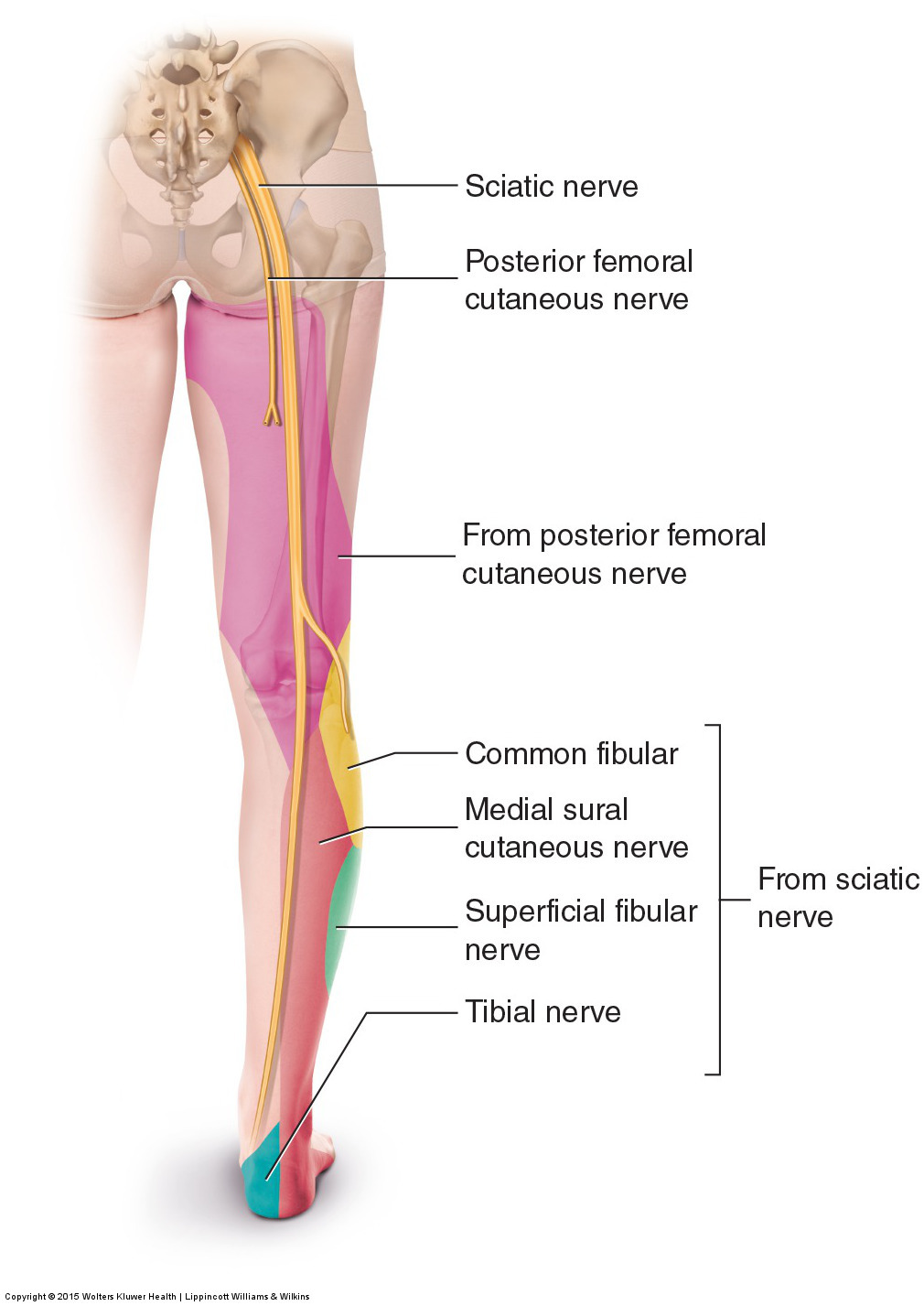Signs and symptoms:
Depending on its severity, a pathologic disc may be asymptomatic. This is especially true of degenerated discs or small to medium-sized bulging disc or herniated disc. However, if a bulging or herniated disc is large enough, it can cause compression of the spinal nerve (pinched nerve) as it passes through the intervertebral foramen (IVF), resulting in referral pain into the region of the body that the compressed nerve supplies. These referral symptoms can be sensory or motor, depending on which neurons are affected. Sensory symptoms include tingling or pain if the sensory neurons are irritated, or decreased sensation or numbness if the sensory neurons’ transmission is blocked. Motor symptoms include muscle twitching or spasming if the motor neurons are irritated, or weakness or paralysis if their transmission is blocked.

Sciatic nerve sensory innervation in the lower extremity. Manual Therapy for the Low Back and Pelvis – A Clinical Orthopedic Approach (2015).
If the disc bulge or herniation occurs in the cervical spine, the referral symptoms will be experienced in the upper extremity; if a lumbar disc is involved, the referral will occur in the lower extremities (for example, sciatica). If the bulging disc or herniated disc is on one side of the body, the referral symptoms will be on that side of the body. If a bulge or herniation is directly posterior and midline, and thereby compresses both sides of the spinal cord, then it is possible for the referral symptoms to be present in both extremities.
Often, the bulging disc or herniated disc by itself is not large enough to cause neural compression. However, the traumas and stressors that cause disc bulges and herniations often also result in irritation and inflammation of the local tissues, resulting in local swelling in the IVF. It is often the additional compression caused by the swelling that causes neural compression and therefore extremity referral. The presence of the swelling is also often the reason for local “discogenic” low back or neck pain that may accompany a pathologic disc. The swelling presses on the recurrent meningeal nerve (also known as the sinuvertebral nerve), which provides sensory innervation for the annulus fibrosus and adjacent facet joint. Discogenic pain can be extremely severe. However, it is not uncommon for a disc bulge/herniation to cause no local pain at all.


